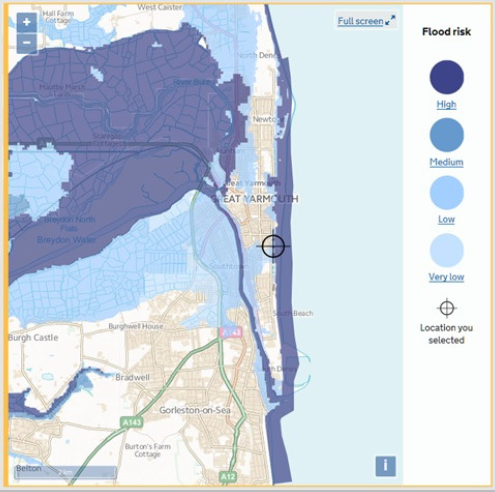Sealife Centre Great Yarmouth is located in a purpose built two storey building situated between Marine Parade and the beach. The ground floor contains a large aquarium complex, visitor centre, gift shop, restaurant and indoor play area. The building is part two storey where offices and storage are accommodated. The site is at high risk from flooding from the sea and river.
What prompted the business to review its resilience plans?
The business is not known to have experienced flooding in the time it has been located at the address however sea flood water has been onserved on the public pathways, promenades and the public gardens to the north side of the site. A sister company in Hunstanton did suffer severe flooding and power loss in December 2013, so they wanted to asses flood prevention and mitigation measures.
Flood map location

What was recommended?
To reduce their flood risk it was recommended they develop a written plan of how they will respond in the event of a flood. This might include a list of steps to take, the order they will be taken in, for staff to follow in the absence of the Senior Manager. Key areas for consideration included flood prevention measures, mitigation measures and grab plans. (Grab plans cover; what machinery and utilities are to be switched off or disconnected, what assets are to taken or moved elsewhere, who is to be told/informed/called, where the Crisis Box is located.)
It was also suggested that they prepare the centre so that damage is minimised in the event of a flood. This involves maintaining flood resistance (measures that form a barrier to flood water) and resilience (measures that reduce the impact of any damage done by floodwater that might penetrate the building) measures.
A further recommendation was to complete the BERT Resilience Review, which is available on the website and may offer additional prompts that could be considered to improve resilience.
What further actions were planned?
- Reduce flood risk
- Develop a business grab plan
- Develop emergency utilities procedures
- Define evacuation trigger points
- Environmental opportunities
- Complete BERT online resilience review
